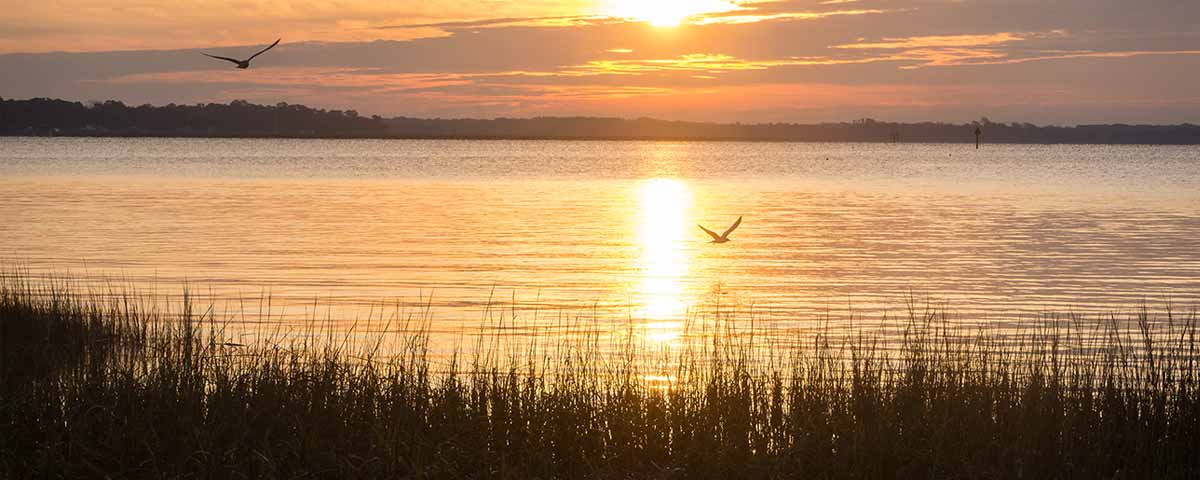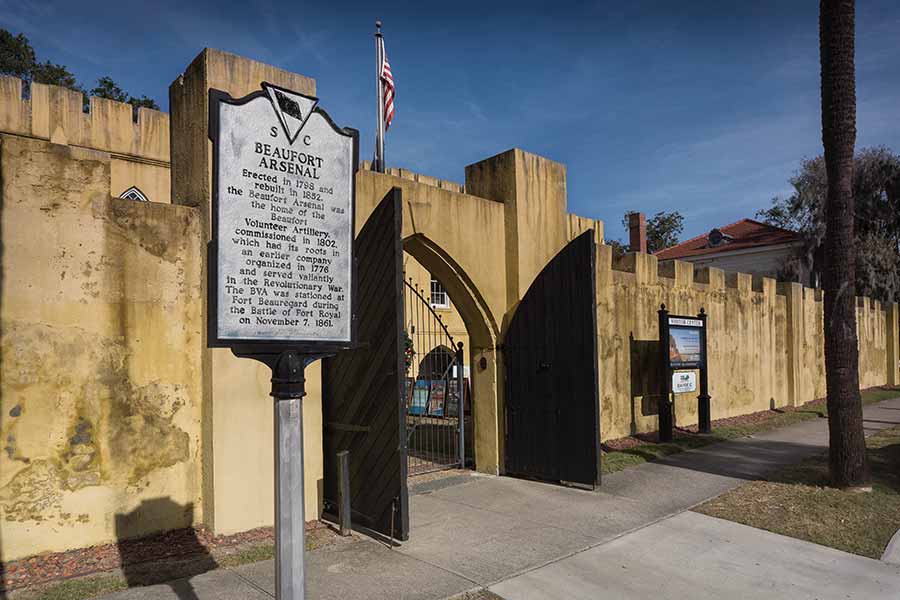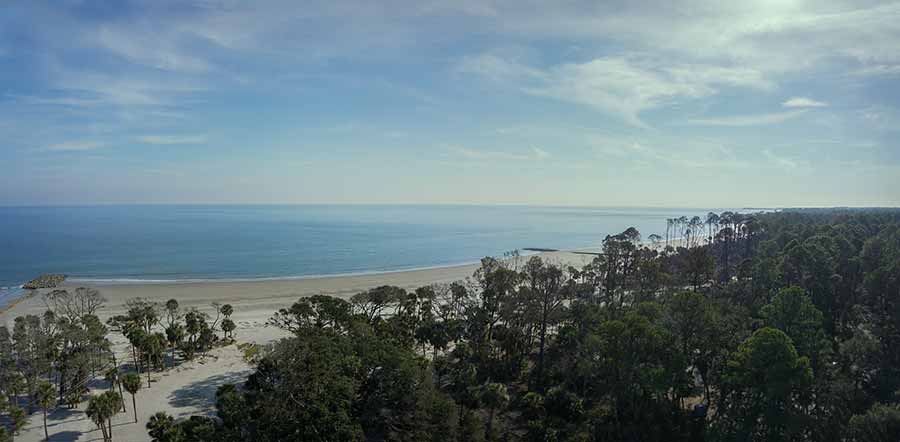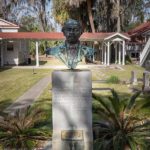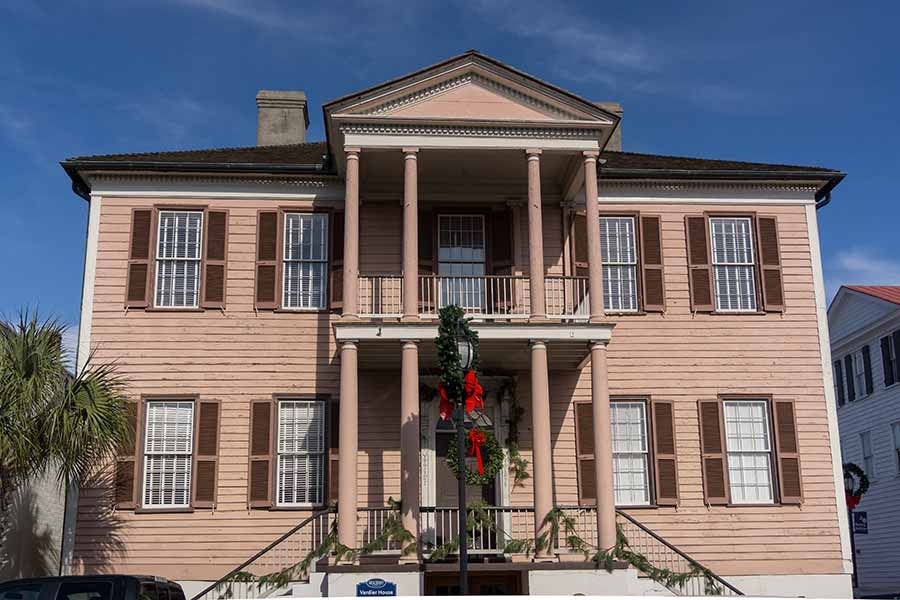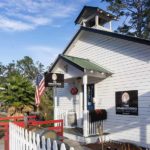Sea Islands dot deep-water Port Royal Sound, South Carolina, where on November 7, 1861, Rear Admiral Samuel DuPont’s fleet of 17 warships blazed past Confederate Forts Walker and Beauregard, sailing in a clever elliptical formation to deliver constant fire on the bastions. Landing nearby, a 12,000-men force eventually took control of neighboring sea islands, including Port Royal Island, where wealthy planters had abandoned their fashionable homes in Beaufort. Union forces would hold the Sound throughout the war, blocking Confederate commerce, and homes in Beaufort would serve as headquarters for the Union Army and the South Atlantic Blockading Squadron. A lovely town of 2,000 in normal times, Beaufort became a hub for recovering Federal wounded. The Union occupation of the nearby Sea Islands would witness an early experiment in emancipation. Northern forces, aided by the arrival of abolitionists, set up schools for the formerly enslaved and supervised agriculture on the vast plantations. The occupation would last the duration of the war, and sites related to that early experiment form the Reconstruction National Monument, designated in 2017 and still in development. Today Beaufort and the islands of Port Royal, St. Helena, and Parris retain a remote and unpretentious charm. Grand oak trees dripping with Spanish moss reach into the sky, and the distinctive sulfur-ish “pluff mud” from tidal flats and salt marshes scents the air. –Sarah Richardson
Home Guards
Completed in 1798 for the Beaufort Volunteer Artillery, the Beaufort Arsenal building was rebuilt and enlarged in the 1850s, and was also the site of a polling place for newly enfranchised freedmen just after the Civil War. The distinctive complex is now home to a visitors center and the Beaufort Museum. beauforthistorymuseum.wildapricot.org
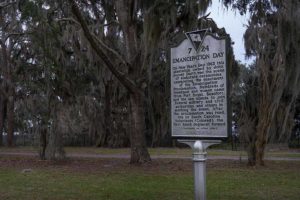
For Blue and Gray
Abraham Lincoln established Beaufort National Cemetery, and 7,500 Union soldiers and 117 Confederate soldiers are buried here. Section 56 contains graves of USCT of the 55th Massachusetts and 1st North Carolina Infantry, whose remains were recovered on Folly Island in 1987 and reinterred here with full military honors in 1989. Visit www.cem.va.gov and search Beaufort.
[quote style=”boxed” float=”left”]“We are now in complete possession of the finest harbor in the South, where the largest ships can enter and ride at anchor in safety.”
– Captain Rufus Saxton, Nov. 9, 1861, Port Royal, S.C.[/quote]
Emancipation
Camp Saxton in Port Royal is now part of the Reconstruction National Monument, designated in 2017. General Rufus Saxton read the Emancipation Proclamation here on New Year’s Day 1863. The site is on the grounds of a U.S. Naval Hospital and accessible weekdays only—following a quick background check by base personnel. Visit www.nationalregister.sc.gov and search Beaufort.
The Battle of Port Royal
On November 7, 1861, Union ships attacked and defeated Fort Walker and Fort Beauregard, the bastions guarding Port Royal sound. The Federal victory planted Northern land troops in the heart of Secessia.
USA
Rear Adm. Samuel DuPont
Brig. Gen. Thomas Sherman
CSA
Brig. Gen. Thomas Drayton
Commodore Josiah Tattnall
STRENGTH
USA
77 Ships
12,653 Troops
CSA
4 Gunboats
3,077 Troops
CASUALTIES
USA
31
CSA
63
Remarkable Man
The grounds of Tabernacle Baptist Church are home to the grave and a bust of Robert S. Smalls. He escaped from slavery by brazenly piloting a Confederate boat to Union blockading ships. Smalls then served in the Federal Navy and became a legislator after the war. 907 Craven St.
It’s Pink!
This Verdier House is the only home from antebellum Beaufort that is open for tours. Built in 1804, the home served as a headquarters during the Union occupation. historicbeaufort.org
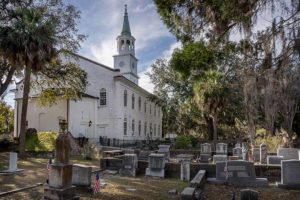
Venerable
Beaufort’s oldest church, St. Helena Episcopal Church, dates to 1724 and functioned as one of 16 military hospitals in Beaufort. A beautiful wooden altar, carved by Union veterans, was delivered to the church in 1878 as an act of reconciliation. The graveyard has remains of two Confederate generals, Richard Anderson and Stephen Elliott. sthelenas1712.org
Seaside Park
White sands, a carpet of rust-colored pine needles, and towering palms create a gorgeous setting in Hunting Island State Park, which includes a lighthouse that was destroyed by the Confederates, then rebuilt after the war. There are 167 steps to the top. southcarolinaparks.com
Local Color
The Cracked Egg in Port Royal at 1638 Paris Avenue offers breakfast and burgers in a casual, village setting.

